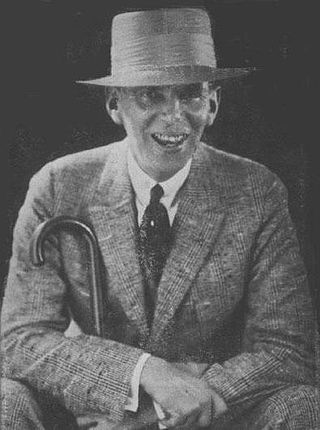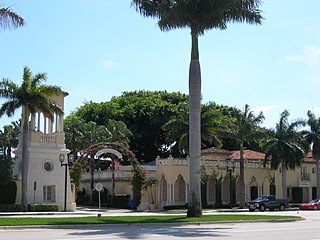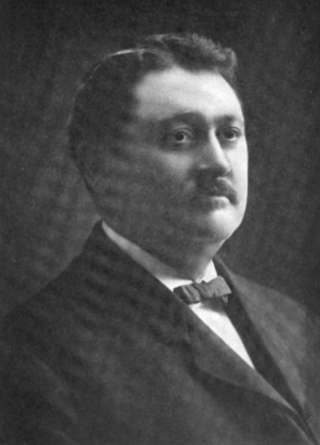
Boca Raton is a city in Palm Beach County, Florida, United States. The population was 97,422 in the 2020 census and it ranked as the 23rd-largest city in Florida in 2022. However, many people with a Boca Raton postal address live outside of municipal boundaries, such as in West Boca Raton. As a business center, the city also experiences significant daytime population increases. A part of South Florida, Boca Raton is 45 miles (72 km) north of Miami and is a principal city of the Miami metropolitan area, which had a population of 6,012,331 as of 2015.
TheBoca Raton is a luxury resort and club in Boca Raton, Florida, founded in 1926, today comprising 1,047 hotel rooms across 337 acres. Its facilities include a 18-hole golf course, a 50,000 sq. ft. Forbes Five-Star spa, eight swimming pools, 30 tennis courts, a full-service 32-slip marina, more than 15 restaurants and bars, and 200,000 sq. ft. of meeting space. The property fronts both Lake Boca and the Atlantic Ocean. The resort was operated as part of Hilton's Waldorf Astoria Hotels and Resorts, and it is now privately owned by an affiliate of MSD Partners with the new name, The Boca Raton.

Addison Cairns Mizner was an American architect whose Mediterranean Revival and Spanish Colonial Revival style interpretations left an indelible stamp on South Florida, where it continues to inspire architects and land developers. In the 1920s Mizner was the best-known and most-discussed living American architect. Palm Beach, Florida, which he "transformed", was his home, and most of his houses are there. He believed that architecture should also include interior and garden design, and set up Mizner Industries to have a reliable source of components. He was "an architect with a philosophy and a dream." Boca Raton, Florida, an unincorporated small farming town that was established in 1896, became the focus of Mizner's most famous development project.

Mediterranean Revival is an architectural style introduced in the United States, Canada, and certain other countries in the 19th century. It incorporated references from Spanish Renaissance, Spanish Colonial, Italian Renaissance, French Colonial, Beaux-Arts, Moorish architecture, and Venetian Gothic architecture.

Wilson Mizner was an American playwright, raconteur, and entrepreneur. His best-known plays are The Deep Purple, produced in 1910, and The Greyhound, produced in 1912. He was manager and co-owner of The Brown Derby restaurant in Los Angeles, California, and was part of the failed project of his older brother Addison to create a new resort in Boca Raton, Florida. He and Addison are the protagonists of Stephen Sondheim's musical Road Show.

The William Gray Warden House is a historic home in Palm Beach, Florida. It is located at 112 Seminole Avenue. On August 1, 1984, it was added to the U.S. National Register of Historic Places.

The Via Mizner is a historic site in Palm Beach, Florida. It is located at 337–339 Worth Avenue. On April 1, 1993, it was added to the U.S. National Register of Historic Places.

The Administration Buildings are a historic site in Boca Raton, Florida, United States. They are located at 2 East Camino Real. On June 27, 1985, they were added to the U.S. National Register of Historic Places.

The Boca Raton Old City Hall is a historic site in Boca Raton, Florida, United States. It is located at 71 North Federal Highway. The former city hall now houses the Boca Raton Welcome Center and the Boca Raton History Museum. On October 16, 1980, it was added to the U.S. National Register of Historic Places. The original design was by Addison Mizner. On April 18, 2012, the AIA's Florida Chapter placed it on its list of Florida Architecture: 100 Years. 100 Places as Boca Raton Town Hall.

The Lavender House is a historic home in Boca Raton, Florida, United States. It is located at 875 Alamanda Street. On February 24, 1995, it was added to the U.S. National Register of Historic Places.
Hermann V. von Holst (1874–1955) was an American architect practicing in Chicago, Illinois, and Boca Raton, Florida, from the 1890s to the 1940s. He is best remembered for agreeing to take on the responsibility of heading up Frank Lloyd Wright's architectural practice when Wright went off to Europe with Mamah Cheney in 1909.

Maurice Fatio (1897–1943) was a Swiss-born American architect.

The Boca Raton Public Library consists of two library facilities serving the residents of the incorporated area of Boca Raton, Florida. The City of Boca Raton, incorporated in 1925, is one of the largest and southernmost cities in Palm Beach County, Florida.

The Everglades Club is a social club in Palm Beach, Florida. When its construction began in July 1918, it was to be called the Touchstone Convalescent Club, and it was intended to be a hospital for the wounded of World War I. But the war ended a few months later, and it changed into a private club.

Clarence Henry Geist was an American financier who played an important role in the early history of Boca Raton, Florida.
WFLA was an AM radio station in Boca Raton, Florida, owned in 1927 by the Boca Raton Radio Corporation and funded by the Mizner Development Corporation. It was created to promote a land development project headed by Addison Mizner, and was intended be heard in "most of the eastern United States".
Wise Guy, which had at different points the working titles The Last Resorts, Palm Beach, The Mizner Story, and Sentimental Guy, is a musical whose music and lyrics were written by Irving Berlin between 1952 and 1956. It has never been produced.
Palm Beach County is a county in the southeastern part of the U.S. state of Florida. Its history dates back to about 12,000 years ago, shortly after when Native Americans migrated into Florida. Juan Ponce de León became the first European in the area, landing at the Jupiter Inlet in 1513. Diseases from Europe, enslavement, and warfare significantly diminished the indigenous population of Florida over the next few centuries. During the Second Seminole War, the Battles of the Loxahatchee occurred west of modern-day Jupiter in 1838. The Jupiter Lighthouse, the county's oldest surviving structure, was completed in 1860. The first homestead claims were filed around Lake Worth in 1873. The county's first hotel, schoolhouse, and railway, the Celestial Railroad, began operating in the 1880s, while the first settlers of modern-day Lake Worth Beach arrived in 1885. During the 1890s, Henry Flagler and his workers constructed the Royal Poinciana Hotel and The Breakers in Palm Beach and extended the Florida East Coast Railway southward to the area. They also developed a separate city for hotel workers, which in 1894 became West Palm Beach, the county's oldest incorporated municipality. Major Nathan Boynton, Congressman William S. Linton, and railroad surveyor Thomas Rickards also arrived in the 1890s and developed communities that became Boynton Beach, Delray Beach, and Boca Raton, respectively.

The Boca Raton Historical Society & Museum is a non-profit organization and public museum dedicated to preserve and collect history and artifacts of Boca Raton, Florida, United States, for educational and advocacy purposes. The society is known for their goal of historic designation and restoring historical structures important to the history of Boca Raton. The society offers exhibits, lectures, lessons, history tours, and educational programs to achieve their goal. Many interactive educational programs and services of the society are provided to schools, teachers, and children to help educate Florida's history. Additionally, the community provides a library of collected and preserved artifacts, photographs, newspapers, diaries, reference books, and research papers documented for educational and research purposes. The historical society has been a contributor of researching local history of Florida and Boca Raton and offers scholars, educators, university graduates and interns access to their research collection and publications, such as the Spanish Papers. The Boca Raton Historical Museum is publicly open from Monday through Friday from 10am to 4pm.





















